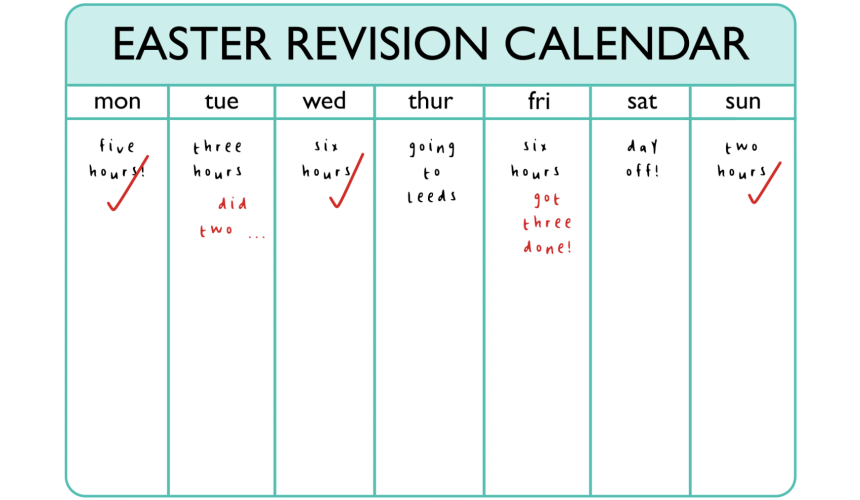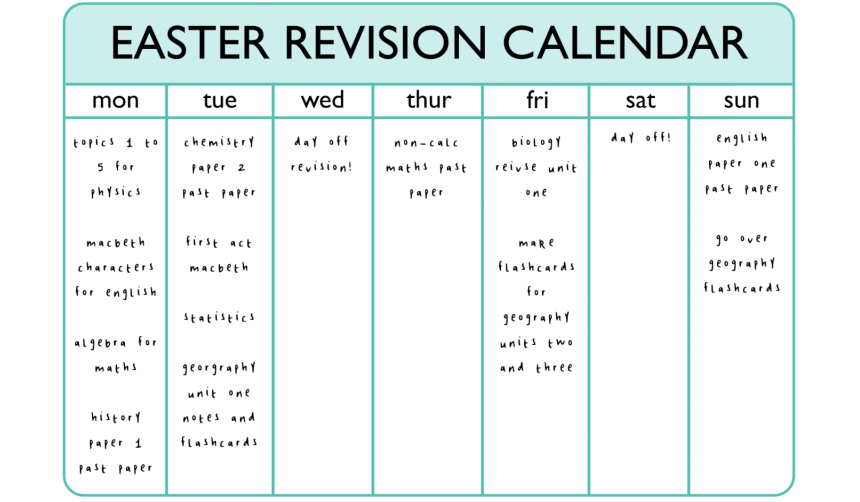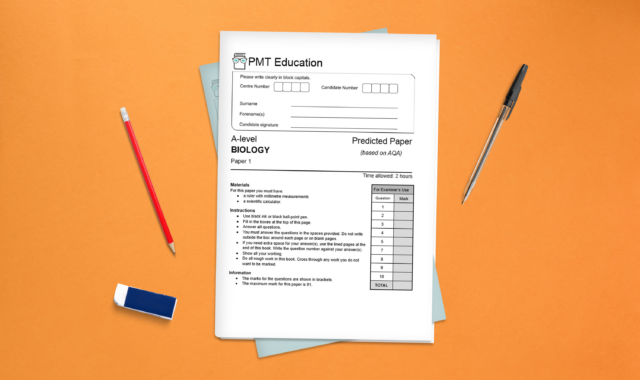As Easter approaches (and with it, the summer exam season), your child might be thinking about how much revision they should be doing over the holidays. There are several ways to go about structuring their Easter revision, but this article will talk about the two main ones: a content-based approach and a time-based approach.
Your child may find themselves overwhelmed by the amount of work they feel they need to cover, and this is completely understandable! They’re approaching a very stressful time of year. Putting in a sensible revision structure early can alleviate some of that stress and help your child understand exactly what they need to get done.
Time-based approach
Some educational experts claim that seven hours a day is the perfect amount to try and cover each day over the Easter holidays – which makes sense, seeing as it’s roughly equivalent to a typical school day plus daily homework. However this might seem like a daunting task for students to launch into, away from the structure of a school day.
It might be better for your child to set a slightly shorter time goal each day, to find out what works best for them, and then work up to however many hours they can manage in a day as the Easter Holidays go on. If your child is setting a high hourly target each day over Easter, encourage them to take regular breaks and make sure they’re not overworking themselves just to reach X amount of hours.

It’s not always about the quantity, but the quality of revision that counts. Make sure your child knows which revision methods work for them − past papers, note-taking, flashcards, mind maps − so they’re not wasting time on something that just isn’t working. Every student learns differently and a little bit of research to understand how they revise best could go a long way.
They might want to check out the Pomodoro technique, where you study for 25 minutes before taking a 5 minute break, and repeat. After four cycles of this, you take a longer break. There’s lots of helpful online sites that offer an automated Pomodoro they might want to try, including this Pomodoro timer.
Content-based approach
Your child may prefer to take a content-based approach to distributing work over their Easter holidays. They could figure out the total amount of work they need to cover, and then assign topics or units to different days. This can be particularly useful at GCSE level, when your child will be studying lots of different subjects. With a time-based approach, it could be easy to overlook some subjects over others.
This might mean that some days your child is working a couple more hours than others, but it results in an efficient way to make sure they’re covering everything they need to before exams. It also means they have specific and targeted revision goals for each day they’re working.

Websites such as GetRevising and GoConqr can build them a timetable if they insert all the content they wish to cover! Or they could go the more analogue to-do list route and just write out topics for each day.
Ultimately, it depends on your child
However, at the end of the day, the best approach to Easter revision is dependent on how your child learns and how long they’re able to concentrate for each day. There’s no point ploughing through seven hours of work a day if they’re only going to be taking half of it in.
Try to encourage your child not to compare themselves to their friends, who may be claiming to do hours and hours of revision each day (or on the flip side − none at all!), although this is easier said than done. Revision isn’t a competition, and it’s important for your child just to focus on how they work best and how much they want to be doing.
If your child is worried about the amount of work they’re needing to get in, suggest planning it out together and saying you’ll keep them accountable for doing X amount of hours or a certain amount of content each day.
As Easter approaches and exam season looms, finding the right revision strategy is crucial for your child’s success. Whether opting for a time-based approach or a content-based method, the key is understanding what works best for your child. Emphasising quality over quantity, encouraging breaks, and identifying effective revision methods are essential.







Comments